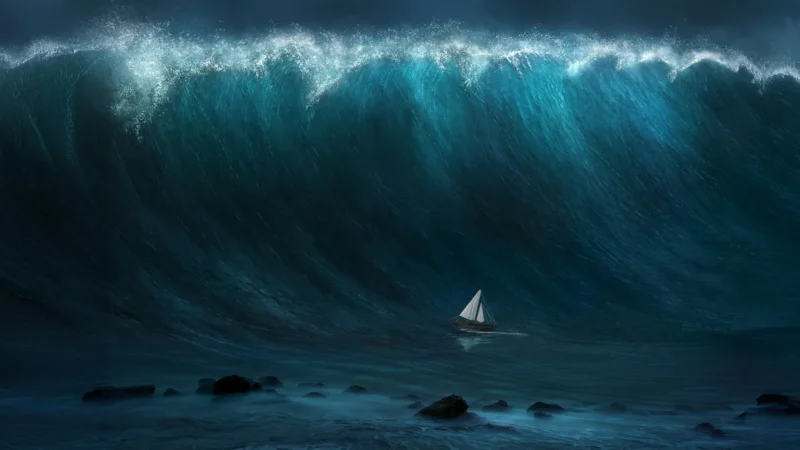Top Highlights
-
Historic Measurement: On January 1, 1995, an 80-foot rogue wave measured at the Draupner oil platform marked the first empirical evidence of these ocean phenomena, debunking long-held myths among seafarers.
-
New Findings: An analysis of 27,500 wave records revealed that rogue waves arise from two familiar wave behaviors—linear focusing and second-order bound nonlinearities—contradicting previous reliance on the modulational instability theory.
-
Real-World Implications: Understanding rogue waves is crucial for maritime safety; current forecasting models misinterpret them as unpredictable, which necessitates updates for ship and offshore structure designs.
-
Future Forecasting: Researchers, including Fedele, are employing machine learning to enhance predictive models, recognizing that rogue waves follow predictable patterns rather than being mere anomalies in the ocean’s natural laws.
Rethinking Rogues
On New Year’s Day 1995, an 80-foot rogue wave hit the Draupner oil platform in the North Sea. This unprecedented event marked the first recorded measurement of such a wave in open waters. For centuries, sailors had warned of these towering waves, but many dismissed their accounts as myths. Researchers, however, have now changed their perspective.
Francesco Fedele and his team analyzed an extensive dataset of 27,500 wave records from the North Sea. They scrutinized 18 years’ worth of data, uncovering a new understanding of rogue waves. Contrary to previous beliefs, their research suggests that rogue waves do not require unique or unusual forces. Instead, they arise from standard oceanic conditions—specifically, a perfect alignment of familiar wave behaviors. This research shifts the narrative, demonstrating that these waves follow the fundamental laws of physics rather than defying them.
From Failure to Forecast
This new understanding carries significant implications. Rogue waves pose real threats to ships and offshore structures, yet many forecasting models treat them as random anomalies. Fedele emphasizes the need for updated models to ensure safer navigation and design for coastal structures. His research informs agencies like NOAA and companies such as Chevron in predicting where these extreme waves might strike.
Furthermore, Fedele is now harnessing machine learning to identify the specific conditions that lead to rogue waves. By analyzing immense datasets, he aims to develop better tools for forecasting these powerful phenomena. This breakthrough in understanding highlights that rogue waves are not mere accidents; they reflect the ocean’s complex yet predictable behaviors. As we enhance our ability to anticipate these waves, we deepen our appreciation of the ocean’s intricate patterns. Ultimately, each rogue wave’s unique signature teaches us more about the ocean’s language, reminding us to remain vigilant and informed.
Stay Ahead with the Latest Tech Trends
Dive deeper into the world of Cryptocurrency and its impact on global finance.
Access comprehensive resources on technology by visiting Wikipedia.
TechV1

